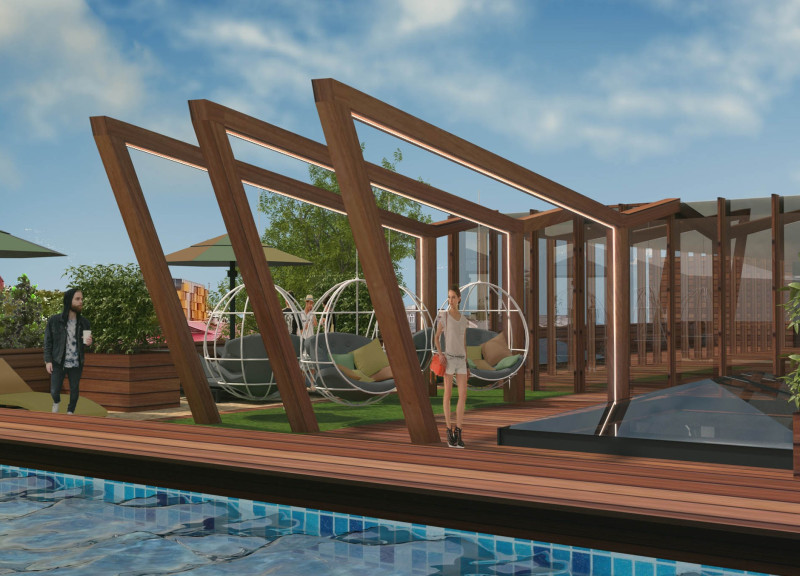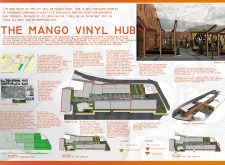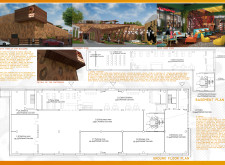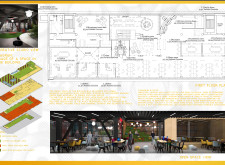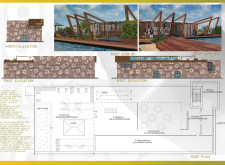5 key facts about this project
### Project Overview
Located in Cesis, Latvia, the Mango Vinyl Hub is designed to serve multiple purposes, incorporating aspects of production, retail, and hospitality. The facility aims to foster cultural development and community engagement through creative spaces that promote local craftsmanship and entrepreneurship. It functions as a social hub that connects residents and tourists alike, enhancing Cesis's standing as a regional destination for arts and culture.
### Spatial Organization and Functionality
The hub features a diverse array of interconnected zones organized into distinct functional areas. The production zones include a vinyl recording studio and a vinyl press room, creating an environment conducive to music creation and showcasing the artistry involved in vinyl manufacturing. In the commercial spaces, a vinyl shop showcases records and local art, while a café and restaurant provide a variety of dining options for visitors. Recreational areas, such as a skate park and a fresh market/business incubator, encourage community engagement and support local business initiatives. Additionally, family-friendly areas and workshops cater to various age groups, fostering intergenerational interaction.
### Material Selection and Sustainability
The architectural design employs a range of materials that highlight contemporary aesthetics while prioritizing functionality. Polished concrete flooring ensures durability, while wooden structural elements introduce warmth and a connection to the surrounding environment. Recreational areas feature artificial grass for informal gatherings, and metal panels enhance the facade's modern character and insulation properties. The design emphasizes sustainability through the use of natural materials and energy-efficient systems, contributing to the building's overall functionality and ecological impact.


